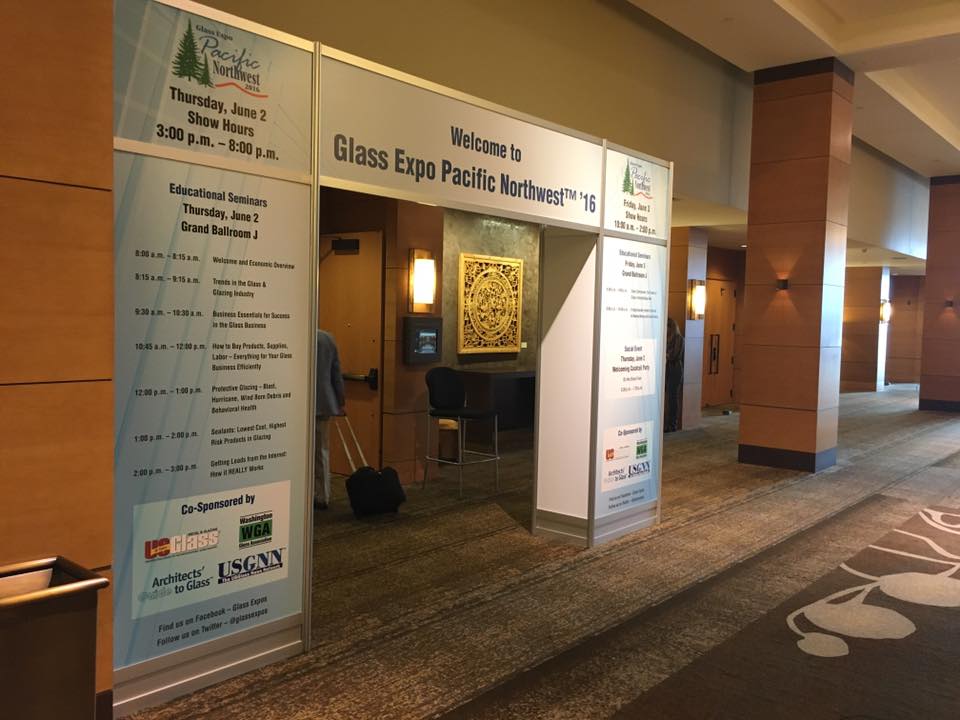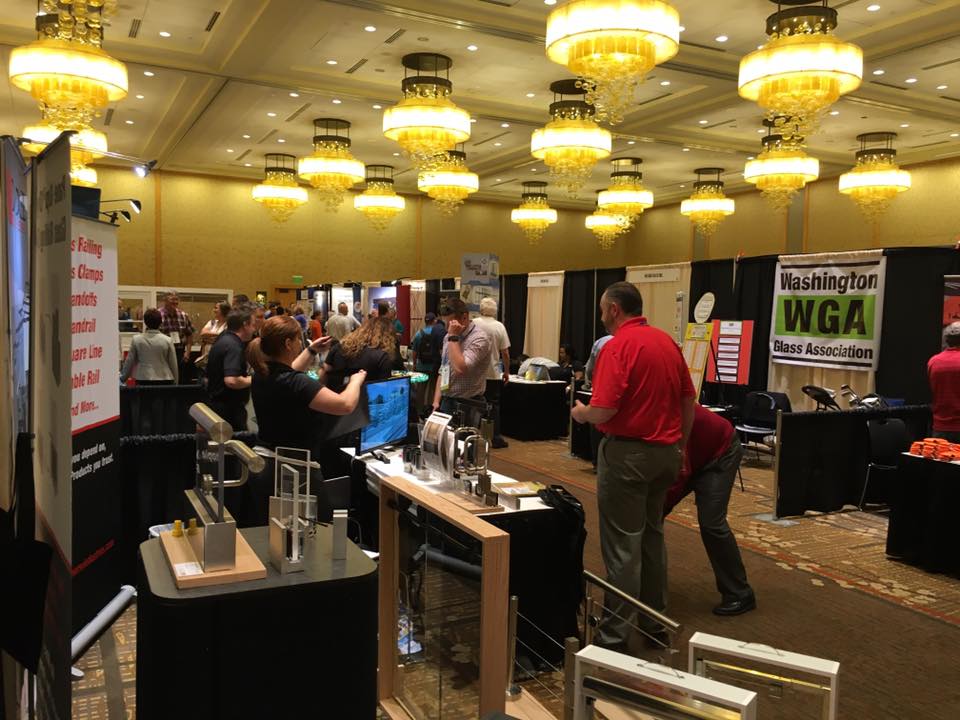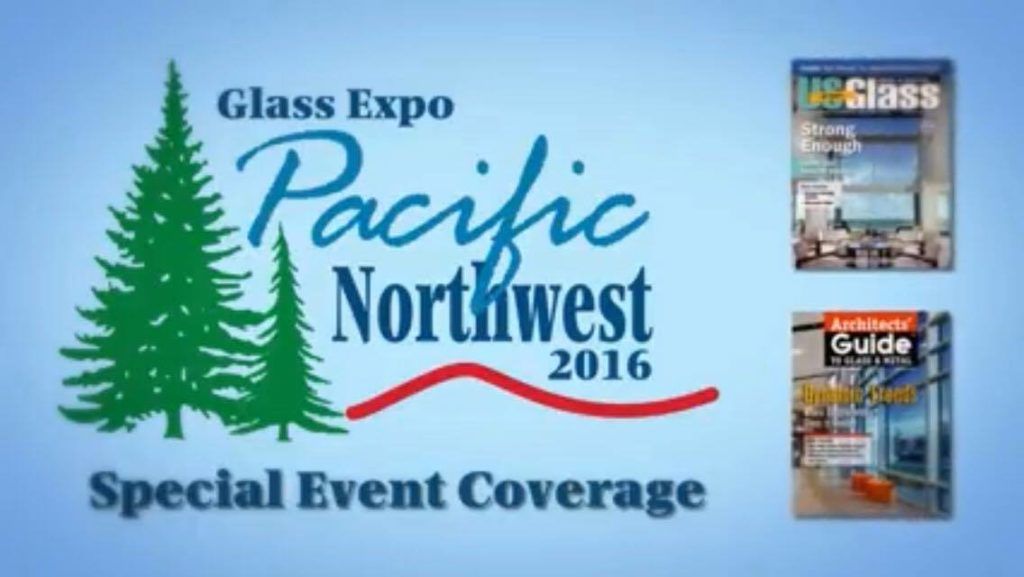 “Do what you say you will, when you say you will.” These wise words of advice given by Lyle Hill, best known as a columnist for Glass Magazine, are just a glimpse into some of my takeaways from this year’s Glass Expo Pacific Northwest, hosted by Key Communications.
“Do what you say you will, when you say you will.” These wise words of advice given by Lyle Hill, best known as a columnist for Glass Magazine, are just a glimpse into some of my takeaways from this year’s Glass Expo Pacific Northwest, hosted by Key Communications.
From June 2-3, the GEPN (the region’s largest architectural glass and metal-related conference and trade show), took place for the first time in over a decade at Seattle’s Hyatt Regency Bellevue. First arriving, I was surprised to see the smaller size of this Expo, as compared to other GlassBuild America locations; however, I soon learned that the content from the seminars and the information presented at the event made the Expo outstandingly informative. I attended several seminars that focused on upcoming trends in the glass industry, steps to success for glass contractors, hurricane glass and analysis and the ever-growing need for environmentally-friendly construction.
 One seminar I attended was “Trends in the Glass & Glazing Industry” by Richard Voreis, CEO of Consulting Collaborative. He discussed the need to be proactive in growing a business, and later shifted to trends in construction and materials. The presentation was fascinating, I found his topic of integrated photovoltaic glass very interesting with its benefits, its rising popularity and its mirror image to regular glass. After his presentation, I spoke to him about his presentation, to which he responded his willingness to give the same presentation right at Giroux Glass. Very exciting!
One seminar I attended was “Trends in the Glass & Glazing Industry” by Richard Voreis, CEO of Consulting Collaborative. He discussed the need to be proactive in growing a business, and later shifted to trends in construction and materials. The presentation was fascinating, I found his topic of integrated photovoltaic glass very interesting with its benefits, its rising popularity and its mirror image to regular glass. After his presentation, I spoke to him about his presentation, to which he responded his willingness to give the same presentation right at Giroux Glass. Very exciting!
The seminar after Voreis’ was “Business Essentials for Success in the Glass Business” by none other than Lyle Hill, quoted earlier. Lyle Hill, veteran of 45 years in the glass industry and formerly from one of the biggest glazing contractors in the US, spoke about the impact of elasticity of demand on an individual business, and how to generally run a successful glass business in today’s economy. His presentation gave a clear outlook for glass business owners on how to succeed, and provided an insightful lesson for those who aspire to create their own glass businesses.
 There was also a very interesting presentation by Brad Glauser of Wasau Window and Wall Systems, called “Protective Glazing -– Blast, Hurricane, Wind-Born Debris and Behavioral Health.” There, I learned more about the newly adopted American Architectural Manufacturers Association (AAMA) human impact test standard, the Unified Facilities Criteria (UFC) and Inter-Agency Security Committee (ISC) blast design criteria, and updated codes and standards affecting hurricane design. His informative discussion of protective glazing systems and its underlying codes and specifications gave the attendees and me an enlightening educational experience to take back to our companies.
There was also a very interesting presentation by Brad Glauser of Wasau Window and Wall Systems, called “Protective Glazing -– Blast, Hurricane, Wind-Born Debris and Behavioral Health.” There, I learned more about the newly adopted American Architectural Manufacturers Association (AAMA) human impact test standard, the Unified Facilities Criteria (UFC) and Inter-Agency Security Committee (ISC) blast design criteria, and updated codes and standards affecting hurricane design. His informative discussion of protective glazing systems and its underlying codes and specifications gave the attendees and me an enlightening educational experience to take back to our companies.
Another presentation I found interesting was “Clear Controversy: The Future of Glass in the Building Skin” by Mic Patterson, formerly of Enclos.  He noted that acoustics are becoming both increasingly an issue and a demand within the growth of urban communities, such as mixed-use areas like Seattle. Currently, buildings produce 40% of greenhouse gas in the city, and most architectural glass is not recyclable due to its coating and other factors. Also, new energy laws being implemented in the next few years, and the technology necessary to follow such laws do not yet exist. Patterson stressed the idea of promoting “green skin” for buildings, and continued to express other ideas and possible solutions that may need to be carried out in up-and-coming years. He really got us all thinking about the life cycle of a product from raw materials through manufacturing, fabrication, installation, building use and recycling.
He noted that acoustics are becoming both increasingly an issue and a demand within the growth of urban communities, such as mixed-use areas like Seattle. Currently, buildings produce 40% of greenhouse gas in the city, and most architectural glass is not recyclable due to its coating and other factors. Also, new energy laws being implemented in the next few years, and the technology necessary to follow such laws do not yet exist. Patterson stressed the idea of promoting “green skin” for buildings, and continued to express other ideas and possible solutions that may need to be carried out in up-and-coming years. He really got us all thinking about the life cycle of a product from raw materials through manufacturing, fabrication, installation, building use and recycling.
The conference, overall, was instructional and provided ample information covering many aspects of the glass industry. It was a stimulating experience that I would gladly do again, so be sure to expect me at the next GEPN.